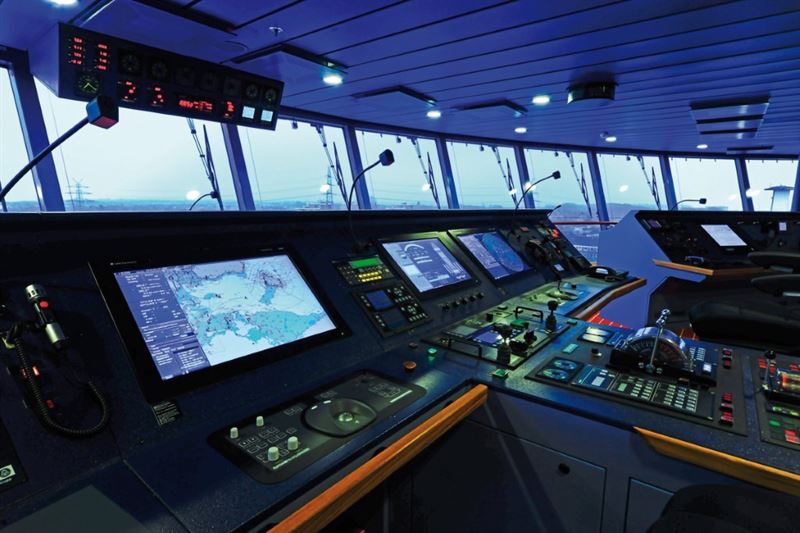The technology group Wärtsilä was contracted to deliver a complete bridge systems installation for five ice breaking LNG-fueled tankers to be constructed for the Arctic LNG-2 project. The navigational systems are delivered by Wärtsilä Voyage, the new business responsible for digital solutions and decision support tools to enhance safety and reliability of shipping operations.
The order with Wärtsilä Voyage was placed in the first quarter of 2020 and now is in process of execution, in partnership with Samsung Heavy Industries Co., Ltd shipyard.
Under the contract two equivalent bridges will be placed in vessels’ superstructure; one of them is turned 180 degrees from the conventional position. This peculiar construction will allow icebreakers to move both forward and aft, thus ensuring safe vessels navigation under adverse climate conditions of the Arctics.
Both navigation bridges of all five LNG tankers will be equipped with the Multifunction Display system consisting of 12 multifunction workstations with a full set of basic applications, including ECDIS, Radar, Conning navigation information display system, BAMS alarm tracking system, and Navi-Planner for advanced route planning. The scope of Wärtsilä solutions also includes VSAT and IRIDIUM satellite communication systems. The workstations are fully integrated into a unified system, which allows the main operational functions to be duplicated, thereby improving safety of ice navigation.
Similar sets of equipment were installed on gas-carriers built under “Yamal LNG” project during 2014-2018 (with «Christophe de Margerie» as the lead ship in the series).
As of today, all the navigational systems planned for installation are ready for integration with Wärtsilä Fleet Operations Solution – the first solution that puts previously fragmented services under one platform to lift ship-to-shore synergies and improve operational processes.
“I’m sure that our experience in Yamal-LNG project, along with the high professionalism of South Korean shipbuilders, and the advantages of integrated technologies, will make the LNG tankers under construction truly effective for solving urgent tasks and developing safe navigation in the Arctics,” said Igor Gapeshko, Managing Director of Transas Navigator product line within Wärtsilä Voyage.
All the equipment installed on board is fully compliant with the requirements of the Russian Maritime Register of Shipping and Bureau Veritas. It is designed and tested to operate all year-round in heavy Arctic conditions at temperatures down to 52°C below zero. The installation of the equipment is scheduled for 2020-2023.
The Arctic LNG-2 project is dedicated to production, storage and shipment of liquefied natural gas and gas condensate from the Salmanovsky gas field of the Gydan Peninsula. The project involves the construction of three LNG production lines with a capacity of 6.6 million tons per year, as well as stable gas condensate. The total capacity of three lines is projected to be 19.8 million tons of LNG per year.
Since its inception in 1974, Samsung Heavy Industries Co. has successfully completed many of the world’s largest shipbuilding and offshore engineering, procurement, construction projects for polar regions. Amongst others, it has developed and built the world’s first Arctic shuttle tanker, Liquefied Natural Gas Floating Production Storage and Offloading units, developed and constructed various Arctic icebreakers and container ships.

























